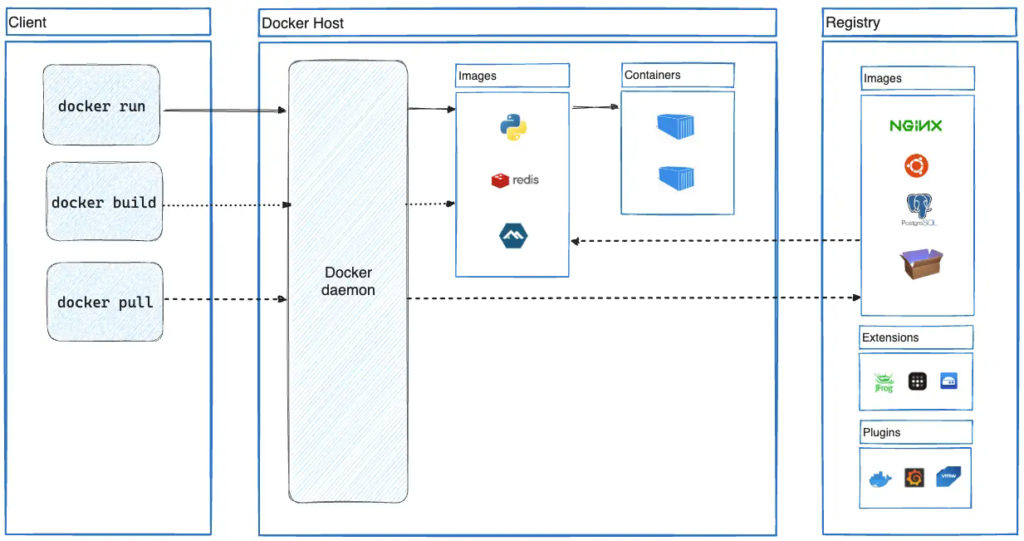### Responsive deployment and scaling
Docker's container-based platform allows for highly portable workloads. Docker
containers can run on a developer's local laptop, on physical or virtual
machines in a data center, on cloud providers, or in a mixture of environments.
Docker's portability and lightweight nature also make it easy to dynamically
manage workloads, scaling up or tearing down applications and services as
business needs dictate, in near real time.
### Running more workloads on the same hardware
Docker is lightweight and fast. It provides a viable, cost-effective alternative
to hypervisor-based virtual machines, so you can use more of your server
capacity to achieve your business goals. Docker is perfect for high density
environments and for small and medium deployments where you need to do more with
fewer resources.
## Docker architecture
Docker uses a client-server architecture. The Docker client talks to the
Docker daemon, which does the heavy lifting of building, running, and
distributing your Docker containers. The Docker client and daemon can
run on the same system, or you can connect a Docker client to a remote Docker
daemon. The Docker client and daemon communicate using a REST API, over UNIX
sockets or a network interface. Another Docker client is Docker Compose,
that lets you work with applications consisting of a set of containers.

### The Docker daemon
The Docker daemon (`dockerd`) listens for Docker API requests and manages Docker
objects such as images, containers, networks, and volumes. A daemon can also
communicate with other daemons to manage Docker services.
### The Docker client
The Docker client (`docker`) is the primary way that many Docker users interact
with Docker. When you use commands such as `docker run`, the client sends these
commands to `dockerd`, which carries them out. The `docker` command uses the
Docker API. The Docker client can communicate with more than one daemon.
### Docker Desktop
Docker Desktop is an easy-to-install application for your Mac, Windows or Linux environment that enables you to build and share containerized applications and microservices. Docker Desktop includes the Docker daemon (`dockerd`), the Docker client (`docker`), Docker Compose, Docker Content Trust, Kubernetes, and Credential Helper. For more information, see [Docker Desktop](/manuals/desktop/_index.md).